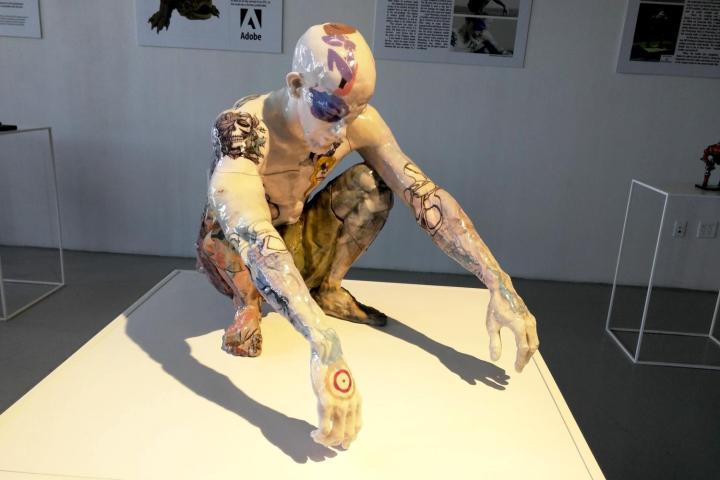
That’s what Lauta and the team at Adobe are shooting to make reality. “What we’re trying to accomplish for the mainstream creative is get 3D printing to the ‘single click, what-you-see-is-what-you-get’ model,” he says, starting with Photoshop. Why Photoshop? “The reason we’re so interested in 3D printing now is because we’re seeing the beginning of a new inflection point,” he adds, and that inflection point is color. “The first color printing technologies are coming out and we’re seeing more on the horizon, and as people get more and more into color, they’re going to need tools like Photoshop, which has a very powerful color engine and ability to manage color through the process.”
Adobe introduced support for 3D printers in Creative Cloud in January of last year, but,at the 3D Printshow in New York last week, the company previewed three major new futures slated for the next release.
“The reason Adobe is so interested in 3D printing now is because we’re seeing the beginning of a new inflection point, color.”

What textures go on the meshes is another matter entirely, but one to which Adobe has paid equal attention. Bump maps, which are the simulations of bumps and wrinkles in objects, can now be created and applied to 3D models with relative ease, Lauta says. In a demonstration, he copied a picture of a brick wall from Google, converted it to a bump map within Photoshop, and wrapped it around a 3D model of a cube. Lauta says, “The best part about this is now I have all these controls in terms of exactly how the bump map is created.” Those include the height and width, of course, but also a few more esoteric specifications like the effects of the bump map based on color frequency.
That last feature about color ties into the new Photoshop’s expanded support for scanning data. 3D scanners, the perfect complement to 3D printers, are all the rage – Google’s Tango, Intel’s RealSense, and Microsoft’s Kinect are only the tip of a very tall iceberg. But many scanners, Lauta says, capture 3D objects by recording data points in three-dimensional space – point clouds – and attaching color to those data points. That’s called a vertex color model, and it’s completely incompatible with texture-based editors like Photoshop. Previously, that meant having to rely on outside software for conversion, but the update bakes in that functionality. “I can convert from vertex to textures seamlessly,” Lauta says.
The features undoubtedly focus on ease of use, but Lauta expects they’ll find appeal among Photoshop veterans. As part of an outreach effort, Adobe distributed copies of the update to influential creators, like sculptor and film modeler James Stewart. “The [new] workflow is incredibly easy,” Stewart says in an e-mail. He used the new Photoshop features to 3D-print “Jeri,” a replica of an earlier bronze work he sculpted by hand. “Having 3D capabilities in Photoshop makes 3D painting accessible. I don’t have to relearn anything. As an artist, I can just intuitively create without noticing there is an interface between me and the artwork.”
The applications, of course, go beyond sculpture. “There’s a whole bunch of creative professional use cases for 3D printing – like prototyping product designs, packaging designs, […] artwork, fine art, [and] jewelry design,” Lauta says. He’s of the ‘if you build it, they will come’ mindset. “We want to make 3D printing accessible to [the] mainstream.”
Editors' Recommendations
- 3D printed cheesecake? Inside the culinary quest to make a Star Trek food replicator
- AMD’s revolutionary 3D V-Cache chip could launch very soon
- AMD’s 3D-stacked Ryzen 7 5800X3D is ‘world’s fastest gaming processor’
- NASA is testing a 3D printer that uses moon dust to print in space
- Ceramic ink could let doctors 3D print bones directly into a patient’s body


